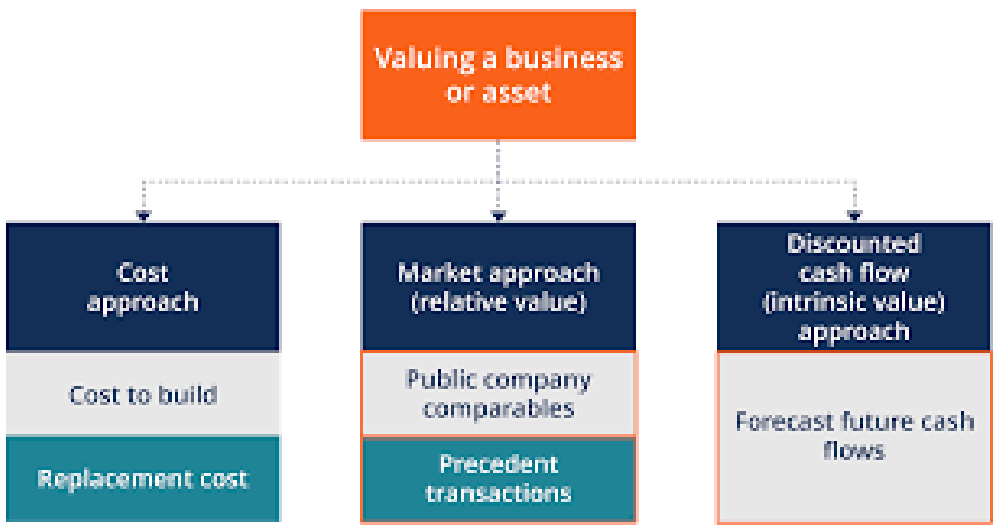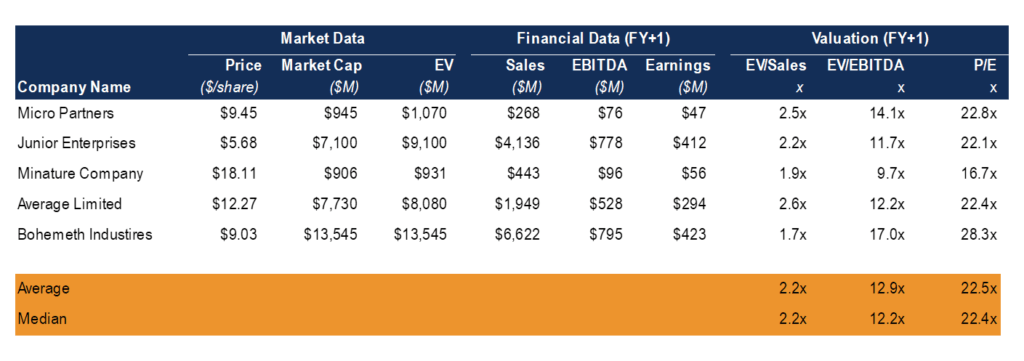International Private Certifications Body for Entrepreneurs, Managers & CEOs Worldwide!

Comparable company analysis (also called “trading multiples” or “peer group analysis” or “equity comps” or “public market multiples”) is a relative valuation method in which you compare the current value of a business to other similar businesses by looking at trading multiples like P/E, EV/EBITDA, or other ratios. Multiples of EBITDA are the most common valuation method.
The “comps” valuation method provides an observable value for the business, based on what other comparable companies are currently worth. Comps are the most widely used approach, as they are easy to calculate and always current. The logic follows that if company X trades at a 10-times P/E ratio, and company Y has earnings of $2.50 per share, company Y’s stock must be worth $25.00 per share (assuming the companies have similar attributes).

Precedent transactions analysis is another form of relative valuation where you compare the company in question to other businesses that have recently been sold or acquired in the same industry. These transaction values include the take-over premium included in the price for which they were acquired.
The values represent the en bloc value of a business. They are useful for M&A transactions but can easily become stale-dated and no longer reflective of the current market as time passes. They are less commonly used than Comps or market trading multiples.
Discounted Cash Flow (DCF) analysis is an intrinsic value approach where an analyst forecasts the business’ unlevered free cash flow into the future and discounts it back to today at the firm’s Weighted Average Cost of Capital (WACC).
A DCF analysis is performed by building a financial model in Excel and requires an extensive amount of detail and analysis. It is the most detailed of the three approaches and requires the most estimates and assumptions. However, the effort required for preparing a DCF model will also often result in the most accurate valuation. A DCF model allows the analyst to forecast value based on different scenarios and even perform a sensitivity analysis.
For larger businesses, the DCF value is commonly a sum-of-the-parts analysis, where different business units are modeled individually and added together. To learn more, see CFI’s DCF model infographic.